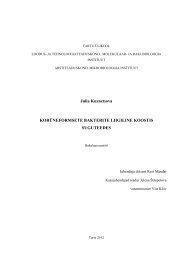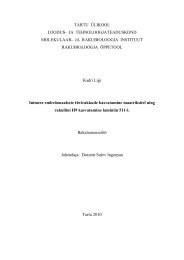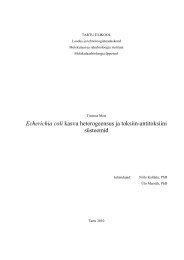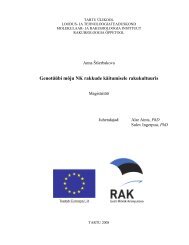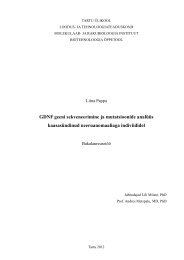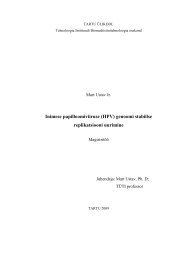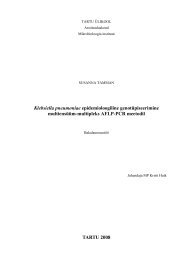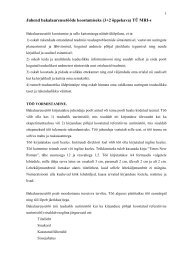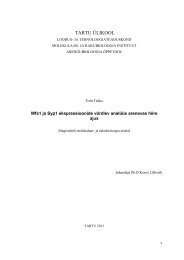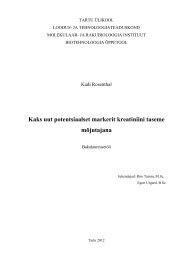Inimese embrüonaalsete tüvirakkude kasvatamine maatriksitel ning ...
Inimese embrüonaalsete tüvirakkude kasvatamine maatriksitel ning ...
Inimese embrüonaalsete tüvirakkude kasvatamine maatriksitel ning ...
You also want an ePaper? Increase the reach of your titles
YUMPU automatically turns print PDFs into web optimized ePapers that Google loves.
The Cultivation of Human Embryonic Stem Cells on Various Matrixes and the<br />
Cultivation of the Cell Culture Line H9 on Laminin 511<br />
Summary<br />
Human embryonic stem cells (hESC-s) proliferate and maintain pluripotency on<br />
various matrixes and in various media. The best system for growing hESC-s for scientific<br />
research is growing hESC-s on Matrigel and in mTeSR1/2 medium. Compared to other<br />
systems, this system provides the highest growth rate as well as the highest percentage of<br />
pluripotent hESC-s. In scientific research as well as for therapeutic applications, matrixes<br />
based on alginate and chitosan, are very promising. However, defined medium, that could be<br />
used with these matrixes, has not yet been found.<br />
Human embryonic stem cells have also been grown in suspension. This systems<br />
requires the addition of exogenous laminin 511 to the cell cultrure medium. However, it is<br />
evident from scientific research, that hESC-s do not need laminin 511 as a matrix but seem to<br />
need a signal to make them produce it themselves. This states the difference of biological<br />
activity between the laminin, that is freely in the medium, and the laminin that is adhered on<br />
glass or plastic. The cultivation of hESC-s in suspension resembles very well the natural<br />
development of an embryo in the fallopian tube and in the uterus.<br />
In this research we cultivated hESC-s on Lm511 that was adhered on glass. Colonies<br />
of hESC-s asquire bizarre morphology already on the first day after the passage and compared<br />
to the colonies on Matrigel the overall number of colonies as well as the percentage of<br />
pluripotent cells declines. Our results are in agreement with Vuoristo et al (2008) and show<br />
that hESC-s produce Lm511. However, differently from Vuoristo et al (2008) but in<br />
agreement with Braam et al (2008) our results show, that hESC-s do not produce Lm111.<br />
Our results also prove the presence of Lm111 in Matrigel.<br />
The scientific research also show that in addition to signals regulated by laminin,<br />
hESC-s need signals from growth factors, out of which most important are signals induced by<br />
bFGF. It is yet to be determined whether the signal from laminin 511 is required for the<br />
proliferation or for the maintenance of pluripotency.<br />
42



